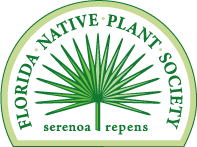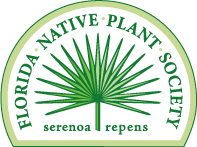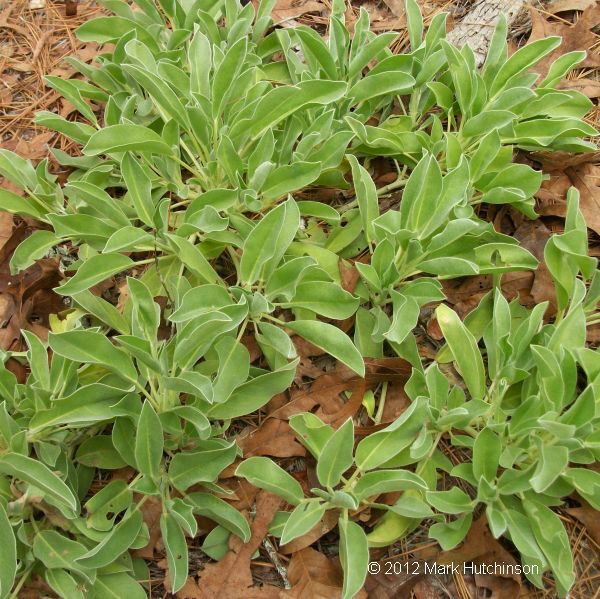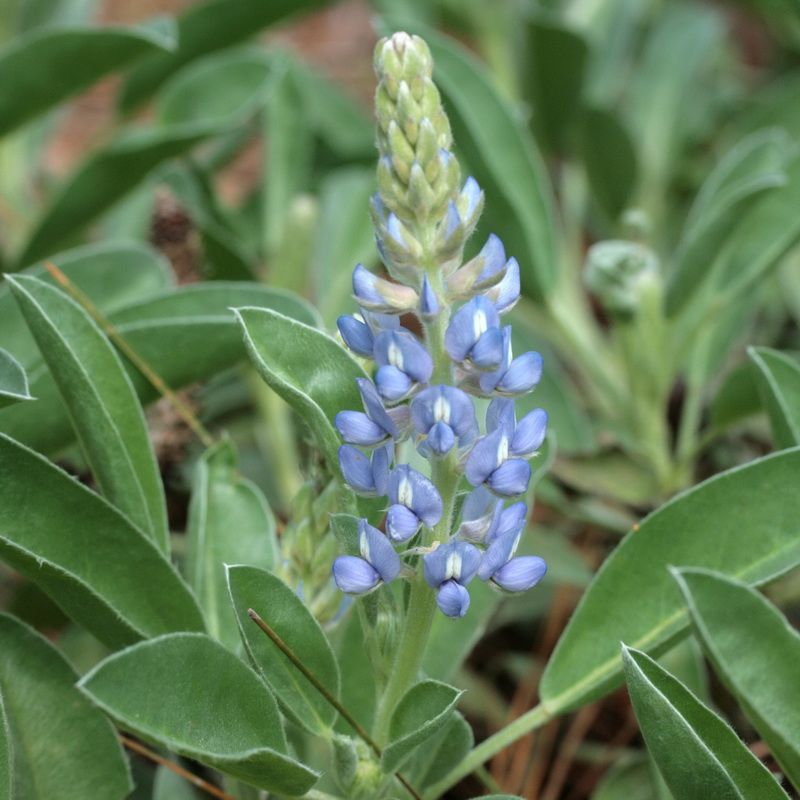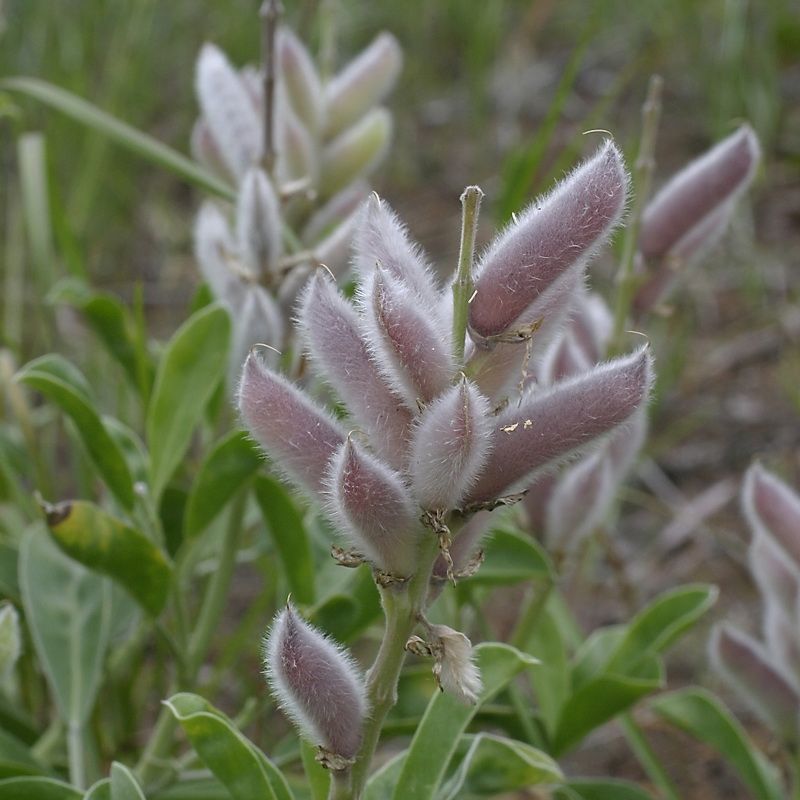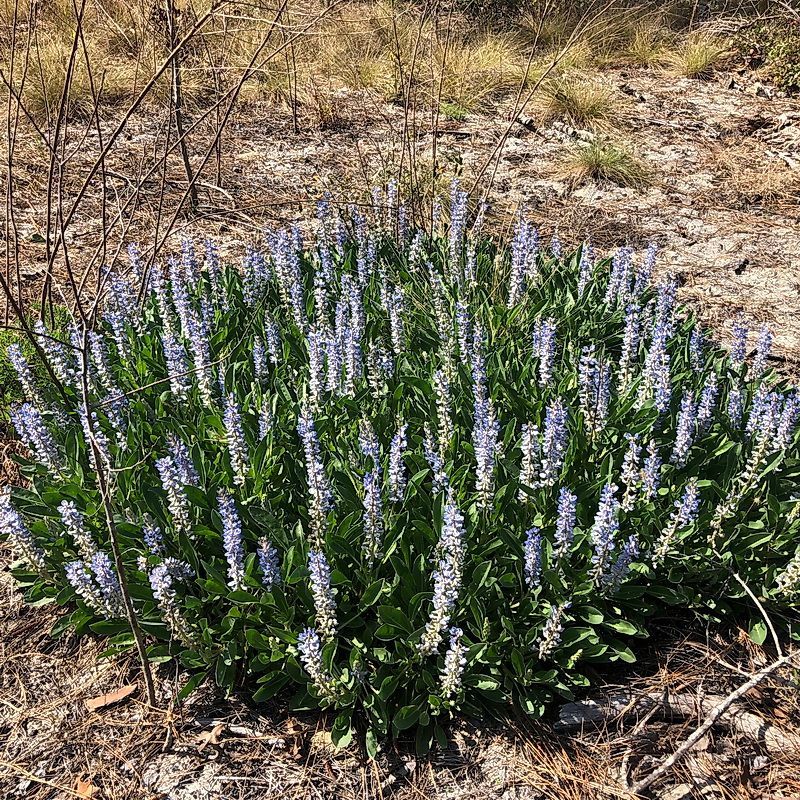FNPS Plant Database
Lupinus diffusus
Nomenclature
Common Name:
Synonym(s):
Genus species:
Family:
Fabaceae (Leguminosae)
Plant Specifics
Form:
Size:
Life Span:
Long-lived perennial
Flower Color:
Fruit Color:
Phenology:
Noted For:
Landscaping
Recommended Uses:
Considerations:
Availability:
Propagation:
Light:
Moisture Tolerance:
Always Flooded---------------------------------Extremely Dry
□□□□□□□□□□□□□□□□□□□□□□□□□□□□□□■■■■■■■■■■■■
Short very dry periods -to- Very long very dry periods
Salt Water Flooding Tolerance:
Unknown
Salt Spray/Salty Soil Tolerance:
Low/no tolerance of salty wind or direct salt spray
Soil or Other Substrate:
Sand
Soil pH:
Suitable to Grow In:
8A,8B,9A,9B,10A,10B

USDA zones are based on the average annual extreme minimum winter temperature.
Don't know your zone? Click here to search by zip code.
Ecology
Wildlife:
- Larval host for frosted elfin ( Callophyris irus ) butterfly, which is listed as Endangered in Florida.
- Also larval host for gray hairstreak ( Strymon melinis ) butterfly, Genista broom moth ( Uresiphita reversalis )a nd other butterflies and moths that use members of the Fabaceae family ( FNPS blog ).
- Attracts bees including bumblebees. Documented visitors include Anthidiellum notatum rufimaculatum, A. perplexum, Megachile exilis parexilis, Osmia sp. and Bombus griseocollis (Deyrup et al. 2002).
Native Habitats:
Comments:
Ethnobotany:
General Comments:
Given that this is short-lived (biennial) and difficult to transplant or grow from seed, this is perhaps best encouraged in places where it grows naturally. Minimizing competition from other plants, and perhaps burning the garden area, may be useful. This plant appears to have a seedbank with seeds that may sprout over an extended period of years if conditions are right.
The range of this plant in Florida appears to be disjunct though how much of this is due to site conditions and how much could be an artifact of forestry practices is unknown.
Citations:
Deyrup, Mark, Jay Edirisinghe, and Beth Norden. (2002). The diversity and floral hosts of bees at the Archbold Biological Station, Florida (Hymenoptera: Apoidea). Insecta Mundi, 544.
Huegel, Craig N. (2012). Native Wildflowers and Other Ground Covers for Florida Landscapes. University Press of Florida, Gainesville.
Lady Bird Johnson Wildflower Center. (2015). Plant Database: Lupinus diffus (Oak ridge lupine). ( https://www.wildflower.org/plants/result.php?id_plant=ludi2 ). Accessed 2026. Lady Bird Johnson Wildflower Center, University of Texas at Austin, Austin, TX.
Minno, Marc, and Maria Minno. (1999). Florida Butterfly Gardening: A Complete Guide to Attracting, Identifying, and Enjoying Butterflies. University Press of Florida, Gainesville.
Osorio, Rufino. (2001). A Gardener's Guide to Florida's Native Plants. University Press of Florida, Gainesville.
Wunderlin, R. P., B. F. Hansen, A. R. Franck, and F. B. Essig. (1999+). Atlas of Florida Plants. ( https://florida.plantatlas.usf.edu/ ). [S. M. Landry and K. N. Campbell (application development), USF Water Institute.] Institute for Systematic Botany, University of South Florida, Tampa.
